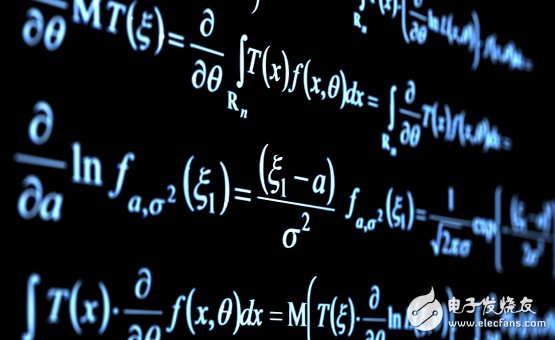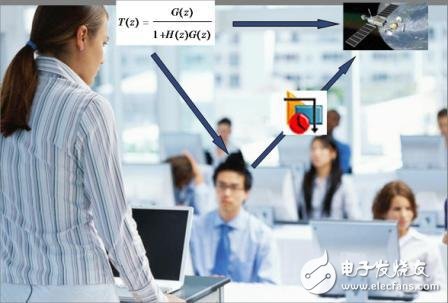The author of this article, maxfiner, graduated from Xidian University with a master's degree in signal and information processing. Maxfiner used to work in the wireless communication department of Huawei Communication Technology Company. He has many years of experience in engineering research and development, as well as algorithm theoretical research, simulation verification, and corresponding hardware design and implementation capabilities. He has practical experience in all aspects of communication physical layer development and design .. . Proficient in signal processing design small TIps (2): the role of mathematics Regarding the direction of electronic engineering, generally in college, you will learn several mathematics courses: calculus, linear algebra, probability theory, complex variable function, stochastic process, matrix theory, numerical analysis, etc. But for most people, after joining the work, everyone will feel emotion, most of the content is basically forgotten. why? The reason is simple, because it is never used again. For many specific engineering fields, most of these courses are really not very useful. As far as my personal work experience is concerned, after working, I am mainly engaged in the application and implementation of the communication physical layer. Calculus is rarely applied directly. In addition to advanced mathematics teachers, who else will pay attention to Cauchy's median theorem? The complex function has never been in contact for many years. In these courses, two are used relatively, one is Fourier transform, and the other is linear algebra. The most frequently used is the knowledge learned in high school, such as complex numbers, trigonometric functions, elementary functions and so on. Just like spending a lot of time learning English from the first grade of junior high school, and it is still deaf and dumb English, so many courses at the university, it takes a lot of time and effort to learn, but it is not very useful. In retrospect, I would rather not go to college if I only wanted a final diploma. In reality, the experience of designing a practical circuit for a single-chip microcomputer, or writing a piece of software code proficiently, is far more realistic than the proof of Taylor's theorem. As such, it seems that university mathematics is useless. This conclusion need not be rushed down first. Let me talk about the specific mathematical applications I encountered in my work. Spectrum analysis requires the use of Fourier transform, which is one of the most widely used in many fields of university mathematics. The proof of sampling theorem and better understanding also need to use Fourier transform. Digital up-down conversion will involve integration and difference in trigonometric functions. Complex number calculations are used in circuit impedance analysis. FPGA implementation will involve some logical operations. FIR filter processing is a multiply-accumulate operation from the implementation point of view, and behind it is different processing of various spectral components. The widely used correlation accumulation operation is also a multiplication accumulation operation. Symbol synchronization, frequency offset estimation, channel compensation and other processing will involve complex multiplication and accumulation operations. Judging from the above typical applications, a considerable number of digital signal processing applications are inseparable from multiply-accumulate operations, such as correlation, convolution, filtering, etc., the specific implementation of Fourier transform-discrete Fourier transform, its implementation The method is also multiply-accumulate. This is also the charm of digital signal processing. A simple multiply-accumulate operation solves various and various forms of problems. The principle and essence of the reason why a cumulative operation can exert such great power is based on the premise of a linear time-invariant system. Therefore, linear operation and the linear system closely connected with it are a content that we must understand well. It must be mentioned that the Fourier transform is the most important application of university mathematics in engineering practice for engineers in electronic engineering and communication signal processing. For example, the time shift and frequency shift of the signal, the up-down conversion processing of the signal, the conjugate symmetry characteristic of the real signal, the difference between the spectrum of the complex signal and the real signal, the digital sampling of the analog signal, the band-pass sampling of the signal, the aliasing and anti-aliasing of the spectrum Aliasing, mirroring of the spectrum, interpolation processing in upsampling, decimation processing in downsampling, etc. can all be explained and analyzed from the perspective of Fourier transform. A comprehensive understanding of continuous and discrete Fourier transforms helps us to explain and analyze various problems in specific applications in a more profound way. When MATLAB was used to simulate some signal processing algorithms, I really realized the application value and great power of linear algebra. Because signal processing is handled with discrete samples, signal processing algorithms and implementations can be expressed and analyzed in the form of vectors and matrices. For example, the simplest multiply-accumulate operation can be seen as the multiplication of two vectors. The most basic and frequent operations of signal processing, such as correlation, convolution, filtering, and Fourier transform, all of which can be expressed in concise vector and matrix forms. Linear algebra probably has several general directions: solving equations, eigenvalue analysis, singular value analysis, and stability analysis. The most widely used in specific projects are basic vector operations and solving equations. The understanding of vector operations is very helpful for the flexible use of MATLAB, because MATLAB uses vectors as the processing object, and vector operations are much more efficient than for loops. When I first learned the eigenvalues, I still didn't understand what the eigenvalues ​​are for, and I haven't seen them for years. However, when I needed to understand the principles of the LMS adaptive algorithm because of my work, I first felt the value of the eigenvalue strongly. Anyone who is familiar with the LMS algorithm knows that each step of the LMS iteration involves a stepping constant, and how much this constant should be taken is closely related to the eigenvalue of the signal correlation matrix. Teacher Zhang Xianda once wrote a monograph devoted to the application of linear algebra in signal processing, from which we can see a lot of specific applications of eigenvalues, norms, singular values ​​and other concepts in signal processing. Many signal processing algorithms have to solve equations, and solving equations involves a variety of matrix decomposition methods. It is more appropriate to implement these matrix decomposition algorithms based on DSP digital signal processors. However, for application scenarios with higher real-time requirements, more FPGA-based hardware implementation is used, and matrix decomposition is not used much. More alternative methods are used, such as iterative-based methods. Like the LMS algorithm mentioned above, it is an alternative to the LS algorithm that requires matrix factorization. Because the iterative method is more convenient to implement with FPGA. My personal experience is very limited, and only involves a small part of the application of signal processing in communication. From my perspective, for the general circuit design, software design, logic design and many other fields, the practical application of mathematics in universities Not too much, the correlation is not very big, more is to play a theoretical support and understanding role. But for the field of algorithms, such as communication signal processing, radar signal processing, pattern recognition, data mining, information retrieval, etc., university mathematics knowledge still has a lot of use. In addition, it also has a lot to do with the current development status of our country. There are relatively few engineering application groups and companies that really involve a lot of mathematical knowledge, and most of them are in relatively primary and superficial applications. To cite two examples, the first one is that there are hundreds of domestic manufacturers of video surveillance, but most of them are in the primary applications of image acquisition, image compression coding, image transmission and display of multiple formats, which involve image targets. There are very few products for detection, image segmentation, image target recognition and other applications. And these are the places that really involve a lot of mathematics and signal processing algorithms, where the charm and value of the algorithms are reflected. In the second example, there are currently household automatic sweepers on the market, which can be automatically charged and automatically clean the ground, but for the traversal of the room floor, most sweepers use a very simple random search method, which is very inefficient, so that some sweepers From time to time, the following voice is issued: "I am stupid, but I am very diligent!". Or say: "Please don't stare at me all the time". This is also a helpless move. For efficient traversal of the floor of the room, a set of detection and identification algorithms must be effectively supported, and these places can better reflect the value of mathematics and algorithms. In real engineering practice, the practical uses of physics and chemistry are larger and wider. Physicists, chemists, biologists, medical scientists, etc. have more tremendous impact on society and have a huge driving force. Relatively few mathematicians. Some people say that mathematics is beautiful, and the description is very exaggerated. Maybe the person does have this feeling. My personal feeling is that the laws of physics are more beautiful than pure mathematical formulas. For most engineering practitioners, mathematics is useful, but it is only a tool. It is far from the top priority. The first priority is always to solve practical specific problems with simple and efficient methods. The time is limited, the ability is even more limited, and I talked about these and communicated with the electronic enthusiasts network engineers. I hope you can correct me a lot, and the suggestions and criticisms are more beneficial. The next issue will be ——Proficient in signal processing design small TIps (3): three cornerstones that must be mastered by signal processing applications , so stay tuned! Past review Home All In One Pc,All In One Desktop Pc,Core I3 All In One Desktop,Intel I3 All In One Pc Guangdong Elieken Electronic Technology Co.,Ltd. , https://www.elieken.com
For engineering engineers, is mathematics useful? How useful is it? What are you doing? I believe it is a problem that many people have considered and cared about. Combined with the direction of electronic engineering, we will discuss this a bit and communicate with everyone. 

Disclaimer: All rights reserved by Dianyou.com, declined to reprint!
Proficient in signal processing design small TIps (1): signals and information